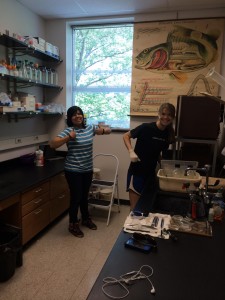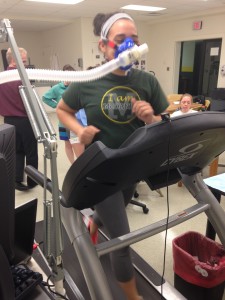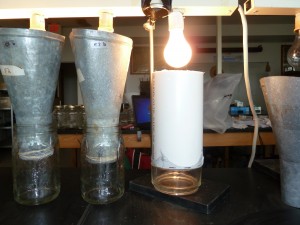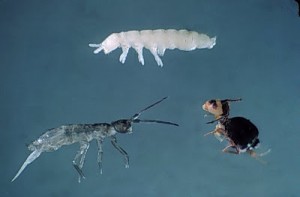“You can’t fool me. There is no top of the hill!”
A participant attempted to relay this to the researchers through his mask while running at a percent grade on the treadmill during his VO2max test. Of course, his words could not be understood during the test, so we had to wait until the conclusion of the test to know that Dr. McCole failed to fool him.
This not only served as the comedic relief for the week, but verbalized our realization that there is always more to do in the research field. As the six student-researchers become more familiar and deeply engrossed in the study, each of us has moments where we think of all the possibilities for data collection and analysis in just a single study. Some of us even 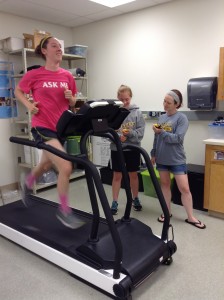 spend our free time pondering new studies to explore different components related to ours.
spend our free time pondering new studies to explore different components related to ours.
Last week wrapped up the pre-training portion of the study where we obtained participants’ body composition and physical fitness level via underwater weighing, a VO2max test, and an endurance run on the treadmill. Dr. McKenzie, Dr. Laird, and Matt ventured to Orlando for the national ACSM conference last week, so Dr. McCole and the five gals held down the fort.
While they were gone we…
- Conducted a majority of the endurance runs. This test consists of a three minute warm up period before setting the treadmill at the speed determined to elicit their VO2max and having the participant run for as long as possible without any sort of time cues. This involved creating an individualized regression equation from the participant’s VO2max test. Let us tell you from experience, running without a grasp on time is difficult.
- Made a snack drawer! Filled with anything from fruit snacks to crackers or nuts, this drawer has become our/mostly Kerrin’s saving grace when blood sugar runs low over the course of our days. In research, it can be the little things that keep you motivated.
- Started a new secondary study! For those individuals who felt so inclined as to run more than one VO2max test, we are now going to have data for a reliability study on the equipment used during our research.
- Continued our research by reading articles related to our chosen topics and have begun to prepare for our senior capstone projects. As rising seniors, it’s exciting to be starting our work and getting a jump start on the school year, but incredibly terrifying all at the same time.
- Learned how to be quick on our feet. Conducting research on human subjects is tough work! Our schedule is determined by each individual’s schedule and changes from day to day. As researchers, we must be flexible and think creatively in order to meet the subjects’, researchers’, and study’s needs.
- Don’t worry, even after two weeks we all still love each other! Glad to have the full team back in action, increasing physical fitness one day at a time 🙂
This week marks the beginning of the three-week training programs! Participants have been randomized into either the high-intensity interval or the standard training groups, both running 31-minute training sessions four days per week. The excitement of training is just so high that you’ll have to tune in next time for the scoop!
Thanks for reading! HIIT Team signing off!

